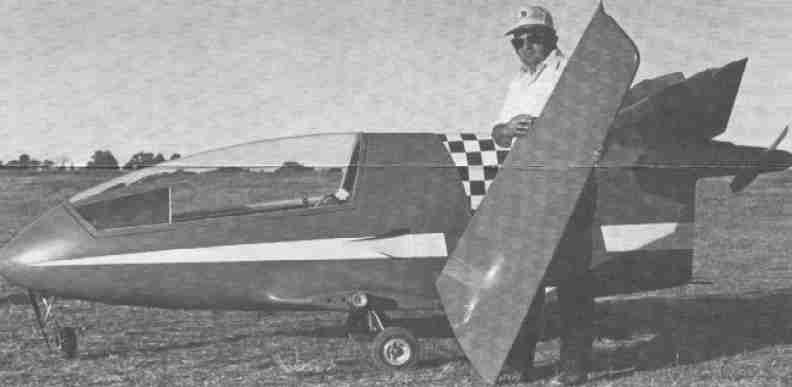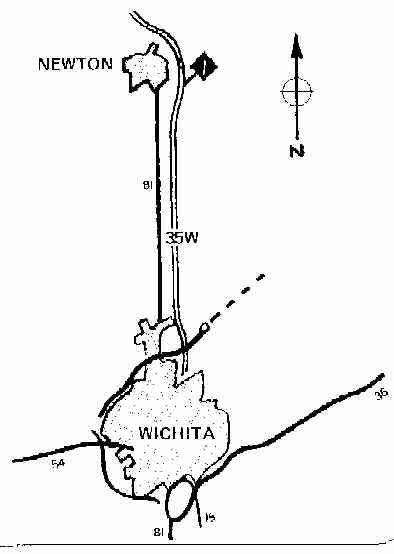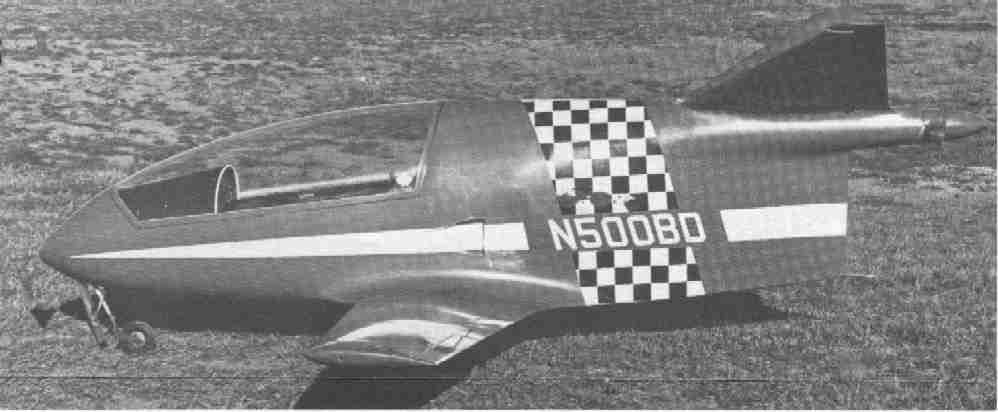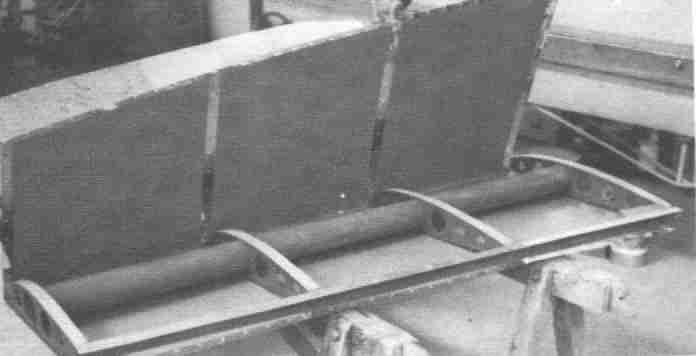BD-5 Information Memo - No. 3
Courtesy of Mr. Ken Trager




On each of the two days there will be seminars on the BD-5 "Micro" and its component parts.
It is also hoped to fly the "Micro" at our Open House although this will very much depend at which stage we find ourselves in the prototype flight-test program. In any case, the "Micro" will be there and anyone interested will be allowed to sit in it. It is also hoped to show a lot of the materials that go into the BD-5's construction, and possibly an engine breakdown.
It will not be absolutely necessary to attend at Newton on both days as seminars and activities will be the same each day.
There will be coffee and donuts (free!) and a lot of interesting
discussions and things to see. Any questions you might have we hope to
be able to answer for you that weekend.
Essentially everything is progressing along extremely well except for one thing, and that is the time schedule. Several things are taking just longer to do than we had originally scheduled. The aircraft is essentially complete and ready for flight tests. We are waiting for a new and improved engine tachometer to arrive so we may obtain final inspection from FAA.
These delays are tremendously frustrating and they make it quite tempting to try and find shortcuts to get the job done. But when we look at the whole program, we are convinced that we have an exceptionally good aircraft in the BD-5 and that we should not take any shortcuts which might jeopardize the aircraft of cheapen the product.
When I mention that everything is excellent, I am referring to many things. First, the structural testing has proven to us that we have a very strong aircraft. The drive system is checking out to be as perfect as we could imagine. Engine cooling and general operation as also passing their testing trouble-free. We did learn that the exhaust muffler produced, under certain conditions, hot spots on the fiberglass shell where the clearance is a little under 1/2". We have replaced this area with an access panel made of metal with flush louvers to completely eliminate any further problems. While we have been waiting for the new tachometer to arrive we have made slight changes to the gear retraction system. To put it into words of our prototype Shop Manager, Delmar Hostetler, "Gear retraction is done with fingertip ease." The delays have given us time to completely finish the long wings and we think we may make our first flight tests with this configuration.
The second area about which we are quite pleased is that we are proceeding along without much delay in getting the BD-5 into production. Our production planning is proceeding along quite well and we are finding a number of improved methods which will just make the aircraft much better. We have nearly 1,000 orders at the present time and are quite pleased with the reception that the sport pilot has given the aircraft. If this kind of interest can continue, we look forward to some real breakthroughs in cost reduction on all things related to the BD-5 and optional equipment.
There are a number of things that we have learned from the aircraft
that will improve things as well as the ability to use the best materials
and methods on the aircraft structure because of the high interest shown
in the airplane. We can sum things up by saying that all test and evaluation
of aircraft thus far has given us pleasing results and although our flight
program has been delayed from what we expected, we still believe we are
going to make production deliveries in a relatively short period of time,
but most important of all, the tests that we have conducted and the interest
shown in the aircraft proves to us that we can give an extremely excellent
design of highest quality materials possible.

Question 11 asked, "Will the DOT accept the Micro?" We would like to clarify our answer by saying the Department of Transportation of Canada has regulations similar to that of the FAA. There are some differences, however, particularly with regards to wing loading. Our final design will be submitted to DOT and there may be a maximum weight limitation based upon their regulations.
Question 18: "Will we have the engine FAA approved?" The word approved can be misunderstood in our answer in the fact that the engine used in the BD-5 will not be FAA certificated. It is not, therefore, a standard approved aircraft engine. Because it is not certificated, however, does not mean it cannot be used on homebuilts. The BD-5 Micro engine may be used in an amateur-built aircraft.
Question 30: "Would the BD-5 be restricted in the area it can fly?" Our answer indicated a 25-mile limitation for the first 50 hours. The correct answer is that the aircraft will be limited to this area for 75 hours since the engine is not a standard certificated engine.
Question 27: "What airfoil is used?" The answer should have read the root airfoil is 642212 and the tip airfoil is 642218.
We hope the above answers more correctly answer your questions.

Wings on the BD-5 will, in any case, be interchangeable and a BD-5A owner can also buy a BD-5B wing materials package later and have the use of both wing sizes.
As for other optional equipment for the BD-5, including engine options,
a catalogue and price list will be published and all BD-5 customers will
automatically receive a copy.
This means that the BD-5 plans will comprise of individual sheets (with technical drawings, pictures and descriptions on each sheet), each individual sheet covering a particular stage of construction.
This new idea in homebuilt plans presentation virtually makes the
BD-5 plans a complete "Assembly Manual" in themselves.
Science and Mechanics should be on the newsstands
on September 16, make sure you get a copy.

As we most definitely do want to conform to FAA regs for homebuilt aircraft, we have gone to a more conventional method of construction in this area.
Wing construction on the BD-5 is very simple, as the above photograph illustrates, and consists of an aluminum tubular spar, preformed aluminum ribs and sheet covering. The trailing edge is aluminum channel.
Assembly of the ribs to the spar is by bonding and riveting, and we have a very simple method of bonding for which materials and full instructions will be supplied. The aluminum skin is drilled and bonded and riveted in place.
A large number of people have commented on how smooth our BD-5 prototype wings look. The prototype wings are built exactly as outlined above and full details will be included in the BD-5 plans on the best way to do this. Riveting will be kept to a minimum, and with the prototype BD-5 wings, we have dimpled the holes and used countersunk rivets. Body filler is then used to make a perfectly smooth surface.
If we could obtain FAA approval sometime in the future we might
eventually go to the "panel rib" method of construction. However, at this
time, in order to conform to the FAA regulations for homebuilt aircraft,
we have designed the BD-5 wing as a more conventional construction.
We will publish a picture of our facility in a future memo.
